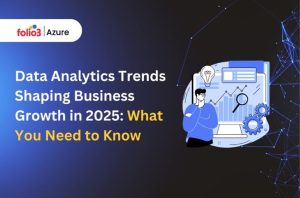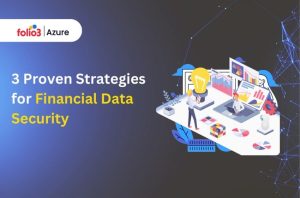Table of Contents
ToggleProduction-level AI refers to artificial intelligence systems that are fully integrated into an organization’s core operations and deliver value at scale. So, unlike buzzworthy proof-of-concept (POC) tools or personal “helper” applications, production-level AI is enterprise-grade: it runs on real company data, is subject to governance, and is woven into business processes end-to-end.
In practice, this means using AI to make everyday business decisions from supply-chain optimization to customer support with models and services that are reliable, governed, and continuously maintained.
This shift matters because working with AI in production can drive competitive advantage and measurable ROI. Industry surveys show enterprises now average over 20 AI projects in production, with most planning to expand their AI portfolios.
Today, business leaders expect a positive return on AI investments within a few years, tracking metrics like customer experience, cost savings, and competitive advantage. In short, production-level AI is about real value: solving business problems and improving processes at an enterprise scale.
This blog explains the key ingredients of production-grade AI, outlines implementation strategies, and shows how companies can use these technologies for competitive advantage.
Laying the Foundations: Data and Architecture
A modern data foundation is the bedrock of Production Level AI. AI systems rely on large, clean, well-governed datasets to work effectively. Industry experts emphasize that “unified integration of AI and applications with a comprehensive data estate is pivotal for the successful adoption of AI capabilities at scale.”
In other words, before you can roll out AI across the business, you need a single source of truth for your data, often called a Modern Data Estate or data platform.
Key elements of this foundation include:
Single Source of Truth:
Consolidating data (e.g. ERP, CRM, sensors, logs) into a centralized, governed data store (data lake, warehouse, or lakehouse). This eliminates silos and ensures consistent inputs for AI.
For example, a modern data estate might start with ERP/transaction data loaded into a cloud data lake, and then be enriched with other sources for analytics.
Data Quality and Governance:
Reliable AI needs reliable data. Companies must invest in data cleansing, labeling, and maintaining data lineage to ensure accurate and reliable data. Clear policies and roles (data governance) ensure data is accurate, secure, and compliant.
Siloed data and poor governance hamper AI efforts. Good governance means AI models get high-quality, trustworthy inputs.
Real-Time and Scalable Infrastructure:
Production AI often requires not just historical data but also streaming and up-to-the-minute data. Modern platforms (cloud data warehouses, big data stores) can handle high-volume, real-time ingestion so AI models can learn and infer current information. This agility makes AI “always on” and responsive to business changes.
Putting these pieces together creates a robust data estate ready for AI. As one analysis notes, applying AI to a modern, comprehensive data platform yields rapid ROI – without it, “you may not be ready to deploy AI at a production level.
Aligning AI with Business Strategy

Leaders should ask: “What concrete problem will this AI solve or what opportunity will it unlock?”
Good use cases range from forecasting inventory needs to automating document reviews or finding upsell opportunities for sales teams. Each use case should have a clear value proposition (cost reduction, revenue growth, improved service, etc.) and executive sponsorship.
Top strategies for ensuring business alignment include:
Define Value and ROI Early:
Begin every AI initiative with a business case. Link the AI solution to Key Performance Indicators (KPIs) like revenue, margin, customer satisfaction, or operational efficiency. For example, a retailer might use AI to reduce stockouts, targeting a percentage improvement in fill rate.
Stakeholder Buy-In:
Engage executives and business unit leaders from day one. Executive sponsors can champion the project, secure funding, and help overcome resistance. Without leadership support, even promising AI pilots often languish.
Use Business-Focused Use Cases:
Focus on AI applications that address business-to-business (B2B) needs. In enterprise settings, AI is most effective when it augments processes like supply chain management, customer support, or financial forecasting.
For instance, banks use AI for fraud detection and loan underwriting, while manufacturers use AI for predictive maintenance. These applications tie directly into the company’s service and revenue models.
Responsible and Ethical Alignment:
Production AI should follow clear governance. This means considering data privacy, fairness, and security. Aligning with organizational values and regulations prevents costly rework. Credible strategy frameworks advise incorporating non-technical factors (culture, bias mitigation, transparency) when planning AI initiatives.
By embedding AI into your business strategy, you overcome the dream of throwing compute or hype at a problem that will automatically yield value. In reality, you ground AI in strategy, ensuring that every machine learning model or chatbot delivers measurable business impact.
Overcoming Data and Governance Challenges
Several critical hurdles relate specifically to data, which is the fuel of AI. Leading causes of AI project failures often include:
Siloed Data Access:
Data trapped in departmental silos prevents AI models from seeing the “big picture.” Many business leaders suffer from siloed operating models lacking AI progress. Breaking down silos (through centralized data lakes or integrated platforms) is crucial. It means not only technical integration but also aligning teams to share data.
Poor Data Quality:
Garbage in, garbage out; low-quality or inconsistent data leads to inaccurate AI. Without rigorous data validation and cleansing, production AI can make flawed predictions that erode trust.
Lack of Scalable Architecture:
Some organizations underestimate how much data AI systems need. A platform that works for a small POC may buckle under enterprise volumes. Ensure your cloud or on-premises data infrastructure can grow.
Using managed cloud services (Azure Synapse, Databricks, AWS Sagemaker, etc.) can provide the needed scalability and data pipelines.
Governance Gaps:
Data must be handled securely and ethically. Regulations like GDPR or HIPAA (in healthcare) must be respected. Proper governance frameworks (defining who can access what data) protect privacy and build confidence among users and regulators.
Change and Collaboration:
Finally, successful AI requires data teams, analysts, and domain experts to collaborate. Establishing an Analytics Center of Excellence or similar cross-functional forum can align priorities. This social infrastructure complements the technical side.
Addressing data and governance is non-negotiable for production AI. Companies that fortify their data practices enable reliable AI, unlocking insights rather than being bogged down in “imperfect data” as one expert quips.
Strategies for AI Implementation
Successfully reaching production requires a structured approach. Here are key strategies to guide AI implementation:
- Start with a clear plan. Develop an AI strategy that aligns projects with business goals. Create an AI adoption roadmap with milestones (e.g., data readiness and skill development). Use maturity assessments to gauge readiness and identify gaps in data or talent.
- Prioritize high-value use cases. Focus resources on initiatives that promise significant ROI or competitive advantage. Rank potential AI projects by their strategic impact and feasibility. Tackling impactful projects first builds momentum.
- Build a modern data platform. As discussed, invest in data integration, quality, and governance. Choose flexible cloud services (data lakes, analytics, AI services) that can scale. Azure, for instance, offers integrated data and AI services to streamline pipelines.
- Adopt MLOps and automation. Implement end-to-end pipelines for model development, deployment, monitoring, and retraining. Automate routine tasks like data labeling and model evaluation. Continuous integration/continuous deployment (CI/CD) can be applied to models as well as code.
- Ensure cross-functional collaboration. Engage stakeholders from IT, data science, business units, and compliance teams. Establish AI governance committees or working groups to oversee ethics, security, and change management. Provide training so that domain experts understand AI capabilities.
- Plan for Responsible AI. Embed fairness, privacy, and transparency from the start. Use ethical guidelines (e.g., Microsoft’s Responsible AI principles) to review models. Building trust (through explainability and safety measures) is crucial for adoption.
- Use agile, iterative development. AI projects should iterate quickly: build a minimal viable model, test it in a controlled environment, refine based on feedback, then scale gradually. This avoids costly over-engineering and adapts to evolving data.
- Leverage cloud AI services. Public cloud platforms (like Microsoft Azure) provide scalable computing, pre-built AI models, and security controls. Using managed services (e.g., Azure Machine Learning, Azure AI Foundry) accelerates development and reduces time to production.
By following these practices, organizations can systematically tackle the complex task of deploying AI. Each step helps bridge the gap between isolated experiments and robust AI systems that run continuously in production.
Practical Use Cases of AI in Business-to-Business Applications
In practice, Production Level AI manifests through real-world use cases across industries. Here are some examples of how enterprises apply AI to solve B2B challenges:
- Supply Chain and Logistics: AI forecasts demand, optimizes inventory, and routes shipments. For example, manufacturers use predictive models to schedule maintenance on equipment before failures, saving downtime and costs.
- Sales and Marketing: AI scores lead, recommends products, and even generates marketing content. B2B companies use machine learning to identify upsell opportunities and personalize proposals, improving conversion rates.
- Finance and Risk: Banks and insurers deploy AI for credit scoring, fraud detection, and risk modeling. Production AI systems monitor transactions in real-time to flag anomalies and compliance issues.
- Customer Service: Beyond chatbots, production AI powers self-service portals that resolve client queries by accessing knowledge bases or enterprise data. AI also analyzes customer feedback at scale to surface actionable insights.
- Healthcare and Life Sciences: Hospitals use AI for patient triage, medical imaging analysis, and drug discovery. These are mission-critical applications where AI is integrated into care protocols and research pipelines.
In each case, AI is embedded into workflows rather than being just a cool feature. This is the essence of production-level AI that makes it coherently integrated into business systems and processes.
Realizing Competitive Advantage and ROI
Organizations that master production-level AI can leap ahead of competitors. When done right, AI delivers insights and automation that create new capabilities.
For example, firms might use AI to detect trends in customer data that humans would miss, enabling novel products or services.
A recent survey underscores this: enterprises expanding AI cite customer experience, ROI, and competitive advantage as top success measures. In other words, leaders expect AI not only to improve efficiency but also to distinguish them in the market.
Unlock Tangible Business Value with AI
When done right, production-level AI drives real business value. Companies applying AI to their core data often unlock new efficiencies and insights that differentiate them in the market.
For example, automating routine decisions can free staff from strategic work, while predictive models can improve the accuracy of forecasting and resource allocation. In many cases, integrating AI into business processes becomes “the fastest path to competitive advantage”.
See ROI from Operationalized AI Systems
Industry research supports this: among organizations that have operationalized AI, a large majority report clear returns. Even without quoting a single number, it’s clear that informed use of AI can boost revenues and cut costs.
For instance, an AI model that upsells the right product to the right customer or predicts equipment failure before it happens can generate significant profit improvements.
Enable Smarter Decision-Making Across Teams
Data analytics and AI models provide insights for better business decisions. Analytics dashboards and AI outputs can become daily tools for teams. When production AI feeds into dashboards or decision systems, employees get actionable insights in real-time, enabling smarter, data-driven decisions.
This not only improves efficiency but also fosters a data-centric culture. Over time, these gains accumulate: better customer personalization, optimized logistics, improved risk management, and so on.
Convert Data into Long-Term Competitive Edge
By successfully deploying AI at a production level, companies gain a powerful competitive advantage. They convert data into value more effectively than their peers, strengthening their market position.
The key is to treat AI as a strategic investment: measure the business impact of each project and scale what works. With this approach, AI initiatives move from isolated experiments into profitable, enterprise-wide capabilities.
Conclusion: Production AI on Azure
Achieving production-level AI means embedding intelligence into every layer of business operations. It demands a robust data foundation, strategic alignment, and enterprise-grade scalability.
By leveraging platforms like Azure AI Platform and Azure Machine Learning, organizations can streamline deployment, ensure compliance, and scale AI capabilities confidently.
The path to ROI starts with purposeful implementation and Azure’s ecosystem is built to support that journey from prototype to global rollout. For tailored enterprise AI solutions, explore Folio3’s Azure AI services.


